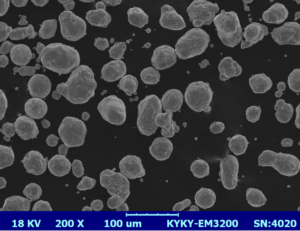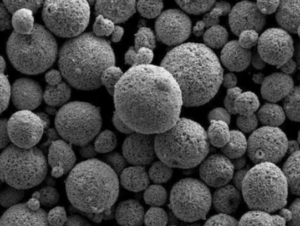Introducción: Por qué el polvo esférico cambia las reglas del juego en la fabricación moderna
Imagine que intenta llenar un tarro con canicas y guijarros. Las canicas, lisas y uniformes, se deslizan en su sitio sin esfuerzo, dejando huecos mínimos. Ahora imagine que hace lo mismo con guijarros de forma irregular. Te costaría empaquetarlas bien, ¿verdad? Este es el principio en el que se basa polvo esférico-partículas diminutas y uniformes que fluyen y se empaquetan con eficacia, revolucionando industrias que van desde la aeroespacial hasta la ingeniería biomédica.
En este artículo nos adentraremos en el mundo del polvo esférico. Exploraremos sus distintos tipos, profundizaremos en sus propiedades únicas y discutiremos por qué es el material preferido para la fabricación de alta precisión. También compararemos diferentes modelos, describiremos sus usos específicos y le guiaremos a través de los pros y los contras de cada uno. Tanto si es un ingeniero experimentado como si simplemente siente curiosidad por los materiales de vanguardia, esta guía tiene algo que ofrecerle.
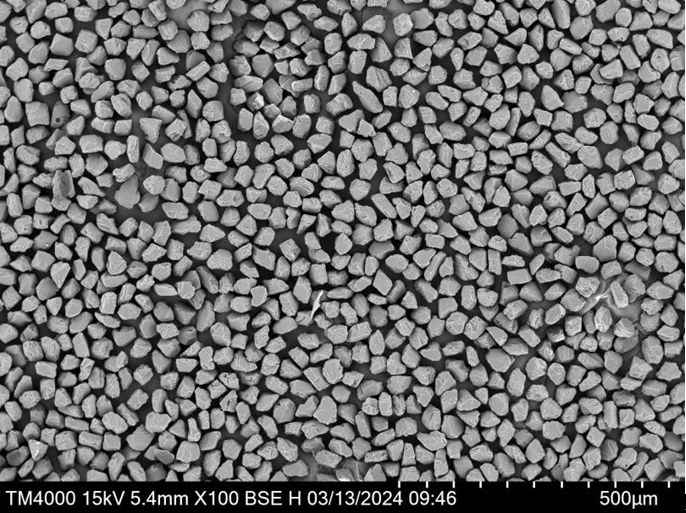
Visión general del polvo esférico
¿Qué es exactamente el polvo esférico?
El polvo esférico consiste en partículas finas y redondas que suelen crearse mediante procesos como la atomización. Estos polvos son muy apreciados por su mayor fluidez y densidad de empaquetamiento en comparación con las partículas de forma irregular. Ya se trate de metales, cerámicas o polímeros, si es esférico, es más eficaz trabajar con él.
Por qué importa la forma
La forma esférica es algo más que una cuestión estética. Es la clave para conseguir revestimientos uniformes, precisión en la fabricación aditiva e incluso consistencia en productos como los farmacéuticos. Cuando se trata de fabricación, la uniformidad y la previsibilidad lo son todo. Imagínese hornear un pastel con ingredientes de diferentes formas y tamaños: algunas partes se cocerían más rápido y otras más despacio, lo que produciría un resultado desigual. El polvo esférico garantiza la uniformidad de cada "ingrediente", lo que se traduce en un producto final superior.
Composición del polvo esférico
Tipos de polvo esférico y sus composiciones
Las distintas industrias requieren diferentes tipos de polvos esféricos, cada uno con su composición única adaptada a aplicaciones específicas. A continuación se describen algunos de los tipos más comunes:
| Tipo de polvo esférico | Composición primaria | Caracteristicas | Aplicaciones |
|---|---|---|---|
| Polvo esférico de titanio | Titanio (Ti) | Alta resistencia, ligereza y resistencia a la corrosión | Aeroespacial, implantes biomédicos |
| Polvo esférico de aluminio | Aluminio (Al) | Excelente conductividad, ligero | Automoción, electrónica, fabricación aditiva |
| Cobre en polvo esférico | Cobre (Cu) | Alta conductividad térmica y eléctrica | Electrónica, disipadores térmicos, revestimientos conductores |
| Polvo esférico de acero inoxidable | Hierro (Fe), Cromo (Cr), Níquel (Ni) | Resistencia a la corrosión, durabilidad | Dispositivos médicos, automoción, herramientas |
| Níquel en polvo esférico | Níquel (Ni) | Alta resistencia a la temperatura y a la corrosión | Aeroespacial, energía, fabricación aditiva |
| Cromo-cobalto Polvo esférico | Cobalto (Co), Cromo (Cr) | Biocompatibilidad, resistencia al desgaste | Implantes médicos, dentales, aeroespaciales |
| Polvo esférico de wolframio | Tungsteno (W) | Alta densidad, resistencia al calor | Blindaje contra la radiación, aeroespacial, defensa |
| Hierro en polvo esférico | Hierro (Fe) | Propiedades magnéticas, asequibilidad | Materiales magnéticos, automoción, fabricación aditiva |
| Zinc en polvo esférico | Zinc (Zn) | Resistencia a la corrosión, propiedades de galvanización | Galvanización, fundición a presión, electrónica |
| Silicio en polvo esférico | Silicio (Si) | Propiedades semiconductoras, resistencia al calor | Electrónica, células solares, fabricación aditiva |
Comprender la composición y su impacto en el rendimiento
La composición de un polvo esférico influye directamente en su rendimiento en distintas aplicaciones. Por ejemplo, la biocompatibilidad y resistencia del titanio lo hacen ideal para implantes médicos, mientras que la ligereza del aluminio es perfecta para piezas de automoción. Al conocer estas composiciones, los fabricantes pueden seleccionar el polvo adecuado para sus necesidades específicas.
Características del polvo esférico
Propiedades clave que hacen único al polvo esférico
¿Qué hace que polvo esférico destacar en el saturado campo de la ciencia de los materiales? He aquí un desglose de las características clave:
| Propiedad | Descripción | Por qué es importante |
|---|---|---|
| Fluidez | La capacidad del polvo para fluir suavemente | Esencial para la fabricación aditiva y la deposición uniforme de capas |
| Densidad de embalaje | El grado de aglomeración de las partículas | Una mayor densidad da lugar a materiales más resistentes y uniformes |
| Superficie | La superficie total de las partículas | Afecta a la reactividad, especialmente en los procesos químicos |
| Pureza | La ausencia de contaminantes | Crucial para aplicaciones que requieren alta fiabilidad, como los implantes médicos. |
| Esfericidad | Cuánto se aproxima la forma de la partícula a una esfera perfecta | Una mayor esfericidad mejora las características de flujo y empaquetamiento |
Comparación de las características de distintos polvos esféricos
Los distintos tipos de polvo esférico presentan estas propiedades en diferentes grados. Por ejemplo, el polvo esférico de aluminio tiene una excelente fluidez y es ligero, lo que lo hace perfecto para la fabricación aditiva. Por el contrario, el polvo de tungsteno es extremadamente denso y resistente al calor, por lo que resulta adecuado para aplicaciones especializadas como el blindaje contra la radiación.
Ventajas del polvo esférico
Por qué el polvo esférico es superior en la fabricación
El uso de polvo esférico ofrece numerosas ventajas, especialmente en industrias en las que la precisión y la eficacia son primordiales. He aquí por qué:
- Mejora de la fluidez: Los polvos esféricos fluyen como el agua, llenando moldes y cavidades con facilidad, lo que resulta esencial en la fabricación aditiva y el moldeo por inyección de metales (MIM).
- Mayor densidad de empaquetado: Como las partículas están más juntas, el producto final suele ser más denso y resistente.
- Mejor acabado superficial: Las partículas esféricas crean superficies más lisas, reduciendo la necesidad de postprocesado.
- Recubrimientos uniformes: En procesos como la pulverización térmica, los polvos esféricos dan lugar a revestimientos más uniformes, lo que mejora el rendimiento y la durabilidad.
- Coherencia en la composición: La uniformidad de las partículas garantiza que cada lote de polvo tenga un comportamiento predecible, lo que es crucial para mantener la calidad en la producción.
Estudio de caso: Polvo esférico en la fabricación aeroespacial
Veamos más de cerca cómo el polvo esférico está revolucionando la industria aeroespacial. En la producción de álabes de turbina, por ejemplo, el uso de polvo esférico de níquel permite crear piezas que soportan temperaturas y tensiones extremas. La uniformidad del polvo garantiza que cada álabe tenga una composición y estructura idénticas, lo que es fundamental en una industria en la que el más mínimo defecto puede provocar un fallo catastrófico.

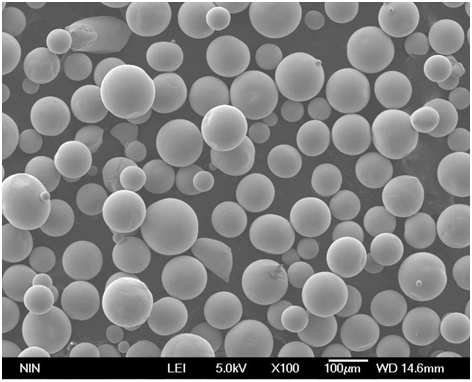
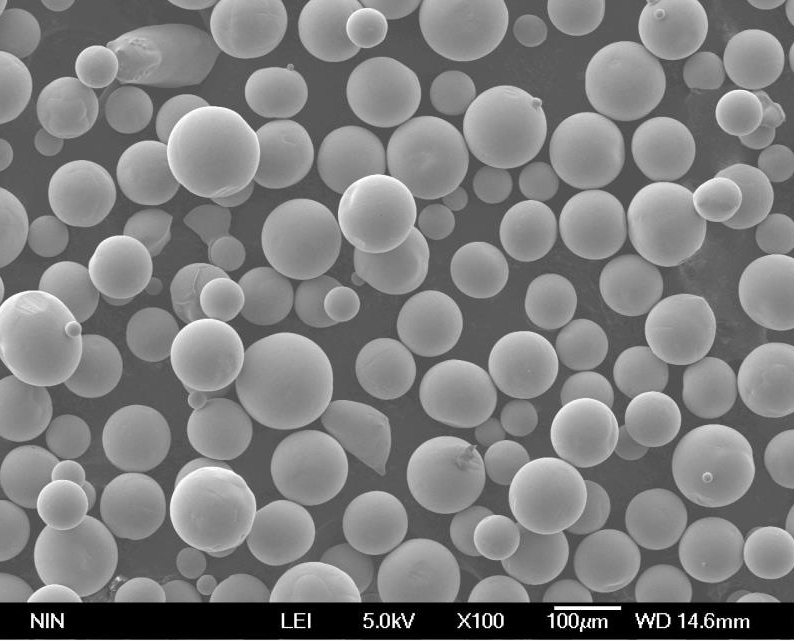
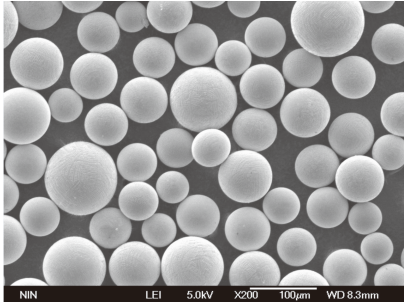
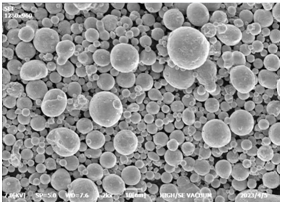

Aplicaciones del polvo esférico
Usos específicos de la industria
Las propiedades únicas del polvo esférico lo hacen inestimable en diversos sectores. He aquí cómo los distintos sectores están aprovechando este material:
| Industria | Solicitud | Ventajas del polvo esférico |
|---|---|---|
| Aeroespacial | Álabes de turbina, componentes de cohetes | Elevada relación resistencia/peso, resistencia al calor |
| Automotor | Componentes de motor, estructuras ligeras | Menor peso y mayor ahorro de combustible |
| Médico | Implantes, prótesis | Biocompatibilidad y precisión en la fabricación aditiva |
| Electrónica | Tintas conductoras, componentes | Alta conductividad eléctrica, precisión en microfabricación |
| Defensa | Blindaje, munición | Densidad para protección balística, calidad constante |
| Energía | Reactores nucleares, paneles solares | Resistencia a altas temperaturas, eficiencia en la conversión de energía |
Cómo el polvo esférico está transformando la fabricación aditiva
La fabricación aditiva, o impresión 3D, es uno de los campos más apasionantes en los que el polvo esférico está teniendo un impacto significativo. La uniformidad y fluidez de estos polvos son perfectas para crear diseños intrincados y geometrías complejas que serían imposibles con los métodos de fabricación tradicionales. Por ejemplo, en la producción de implantes médicos personalizados, el polvo de titanio esférico se utiliza para crear estructuras que se adaptan perfectamente a la anatomía del paciente, mejorando los resultados y reduciendo los tiempos de recuperación.
Comparación de distintos modelos de polvo esférico
Comparación detallada de 10 modelos de polvo esférico
A la hora de seleccionar polvo esférico para una aplicación específica, es esencial comparar diferentes modelos en función de sus propiedades, composición y coste. A continuación se muestra una tabla comparativa de diez modelos diferentes de polvo esférico, en la que se destacan sus características únicas y sus usos ideales:
| Modelo | Material | Propiedades | Lo mejor para | Gama de precios (por kg) |
|---|---|---|---|---|
| Ti-6Al-4V | Aleación de titanio | Alta resistencia, biocompatible | Implantes médicos, aeroespacial | $350 – $450 |
| AlSi10Mg | Aleación de aluminio | Ligero, buenas propiedades térmicas | Automoción, aeroespacial | $100 – $150 |
| 316L | Acero inoxidable | Resistente a la corrosión, duradero | Productos sanitarios, herramientas | $50 – $70 |
| CuNi2SiCr | Aleación de cobre | Alta conductividad eléctrica, resistencia | Electrónica, disipadores de calor | $200 – $300 |
| CoCrMo | Cobalto-Cromo-Molibdeno | Biocompatible, resistente al desgaste | Implantes dentales, dispositivos ortopédicos | $400 – $500 |
| NiCr20TiAl | Aleación de níquel | Resistencia a altas temperaturas, solidez | Aeroespacial, energía | $600 – $750 |
| Fe2O3 | Óxido de hierro | Propiedades magnéticas, asequibles | Electrónica, materiales magnéticos | $20 – $40 |
| WNiFe | Tungsteno-Níquel-Hierro | Alta densidad, blindaje contra las radiaciones | Defensa, aeroespacial | $500 – $600 |
Especificaciones y normas para el polvo esférico
Especificaciones y normas clave para el polvo esférico
Al seleccionar polvo esférico para diversas aplicaciones, es esencial tener en cuenta las especificaciones y normas que garantizan la calidad y el rendimiento. He aquí un resumen detallado:
| Especificación | Descripción | Normas comunes |
|---|---|---|
| Tamaño de partícula | Diámetro de las partículas de polvo, normalmente medido en micrómetros (µm) | ASTM B330, ISO 3290 |
| Forma de las partículas | Esfericidad o redondez de las partículas | ASTM B212, ISO 19530 |
| Densidad aparente | Masa del polvo por unidad de volumen | ASTM B329, ISO 3953 |
| Densidad aparente | Densidad del polvo tal como aparece a granel | ASTM B212, ISO 3923 |
| Pureza | Porcentaje del material principal frente a los contaminantes | ASTM E18, ISO 9001 |
| Fluidez | La facilidad con la que el polvo fluye a través de un embudo o conducto | ASTM B213, ISO 4490 |
| Composición química | Los elementos o compuestos presentes en el polvo | ASTM E1621, ISO 6892 |
Tamaños y calidades habituales del polvo esférico
Las distintas aplicaciones requieren tamaños y grados específicos de polvo esférico. A continuación se muestra una tabla con algunos tamaños y grados comunes:
| Tamaño (µm) | Grado | Usos típicos |
|---|---|---|
| 10 – 20 | Fino | Recubrimientos de precisión, fabricación aditiva |
| 20 – 50 | Medio | Componentes de automoción, implantes médicos |
| 50 – 100 | Grueso | Aplicaciones industriales, fabricación a gran escala |
Proveedores y precios del polvo esférico
Principales proveedores y precios
He aquí una instantánea de algunos proveedores destacados de polvo esférico y sus precios:
| Proveedor | Tipo de polvo | Gama de precios (por kg) | Sitio web |
|---|---|---|---|
| Ametek | Titanio, aluminio | $300 – $500 | ametek.com |
| Sandvik | Acero inoxidable, cobalto | $50 – $200 | inicio.sandvik |
| Höganäs | Hierro, níquel, cobre | $100 – $400 | hoganas.com |
| Grupo ARC | Tungsteno, Zinc | $200 – $600 | arc-group.com |
| Elemento | Silicio, molibdeno | $150 – $400 | elementum3d.es |
Factores de fijación de precios
El precio del polvo esférico puede variar en función de varios factores:
- Tipo de material: Los materiales de primera calidad, como el titanio y las aleaciones de cobalto-cromo, son más caros que los metales estándar, como el hierro o el aluminio.
- Tamaño de las partículas: Los polvos más finos suelen ser más caros debido al procesamiento adicional que requieren.
- Pureza: Los polvos de gran pureza suelen tener precios más elevados.
Comparación de los pros y los contras del polvo esférico
Ventajas y limitaciones del polvo esférico
En lo que respecta a los polvos esféricos, esto es lo que hay que saber sobre sus ventajas y posibles inconvenientes:
| Aspecto | Ventajas | Limitaciones |
|---|---|---|
| Fluidez | Flujo fluido y eficaz para la fabricación | Puede requerir técnicas de manipulación específicas |
| Densidad de embalaje | Una mayor densidad se traduce en materiales más resistentes | Los polvos densos pueden ser más difíciles de procesar |
| Acabado superficial | Acabado superficial superior con un procesamiento posterior mínimo | Mayor coste debido a los requisitos de procesamiento |
| Uniformidad | Calidad y rendimiento constantes | La producción de polvo esférico uniforme puede ser cara |
| Coste | Económico para grandes volúmenes de producción | La inversión inicial en polvos de alta calidad puede ser elevada |
Comparación detallada: Polvo esférico frente a polvo irregular
- Polvo esférico: Ofrece una fluidez y densidad de empaquetado superiores. Ideal para fabricación de precisión y revestimientos de alta calidad. Sin embargo, su procesamiento puede resultar más caro.
- Polvo irregular: Suelen ser más baratas, pero pueden dar lugar a un flujo irregular y problemas de empaquetadura. Más adecuado para aplicaciones en las que la precisión es menos crítica.
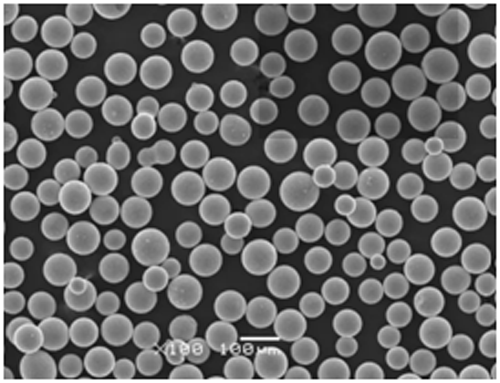
Preguntas más frecuentes
| Pregunta | Respuesta |
|---|---|
| ¿Para qué se utiliza el polvo esférico? | El polvo esférico se utiliza en diversas aplicaciones, como la fabricación aditiva, los componentes de automoción, los implantes médicos y la electrónica. Su uniformidad garantiza una alta calidad y precisión en estos campos. |
| ¿Cómo se fabrica el polvo esférico? | El polvo esférico suele producirse mediante técnicas de atomización, en las que el metal fundido u otros materiales se enfrían rápidamente para formar partículas esféricas. Otros métodos son la atomización con gas y la atomización con agua. |
| ¿Cuáles son las ventajas de utilizar polvo esférico en la impresión 3D? | El polvo esférico proporciona una excelente fluidez y densidad de empaquetamiento, lo que permite una deposición de capas más uniforme y una mejor calidad del producto final en la impresión 3D. |
| ¿Cómo afecta el tamaño de las partículas al rendimiento del polvo esférico? | Las partículas más finas ofrecen mejor resolución y acabado superficial, pero pueden ser más difíciles de manipular. Las partículas más gruesas son más fáciles de manipular, pero pueden no ofrecer el mismo nivel de detalle y acabado. |
| ¿Se puede reciclar el polvo esférico? | Sí, muchos tipos de polvo esférico pueden reciclarse, sobre todo en la fabricación aditiva. Sin embargo, el proceso de reciclaje debe garantizar que el polvo mantenga su calidad y sus características. |
| ¿Cuál es el coste típico del polvo esférico? | El coste varía mucho en función del material, el tamaño de las partículas y la pureza. Los precios pueden oscilar entre $20 por kg para materiales comunes y más de $750 por kg para aleaciones especializadas. |
| ¿Dónde puedo comprar polvo esférico? | El polvo esférico puede adquirirse a proveedores especializados como Ametek, Sandvik, Höganäs, ARC Group y Elementum. Los precios y la disponibilidad variarán en función del tipo y las especificaciones del polvo. |
